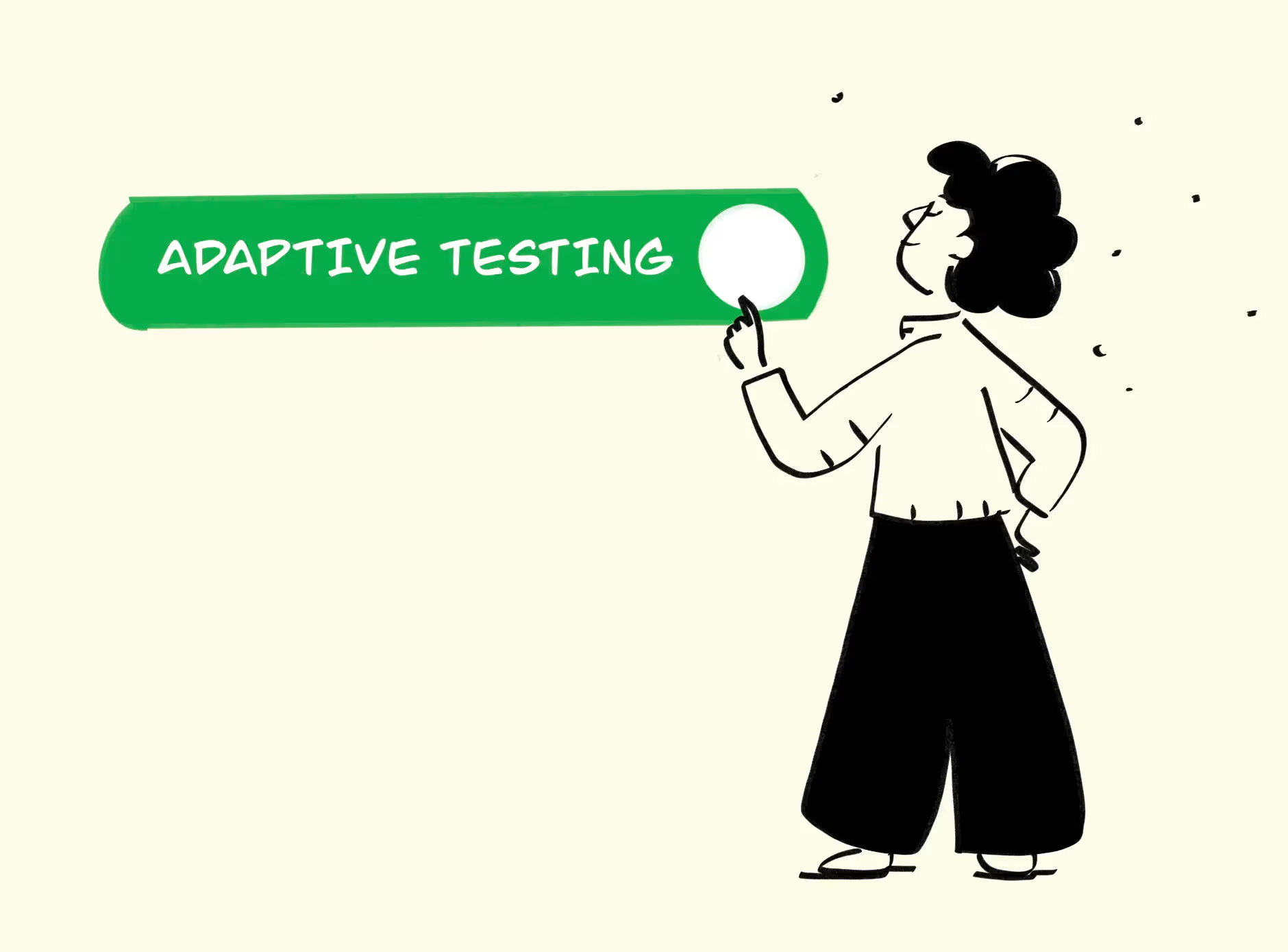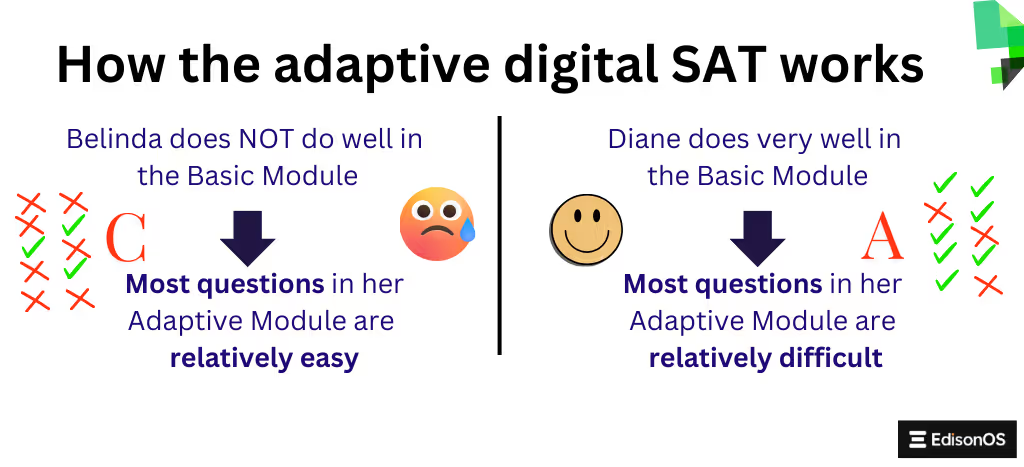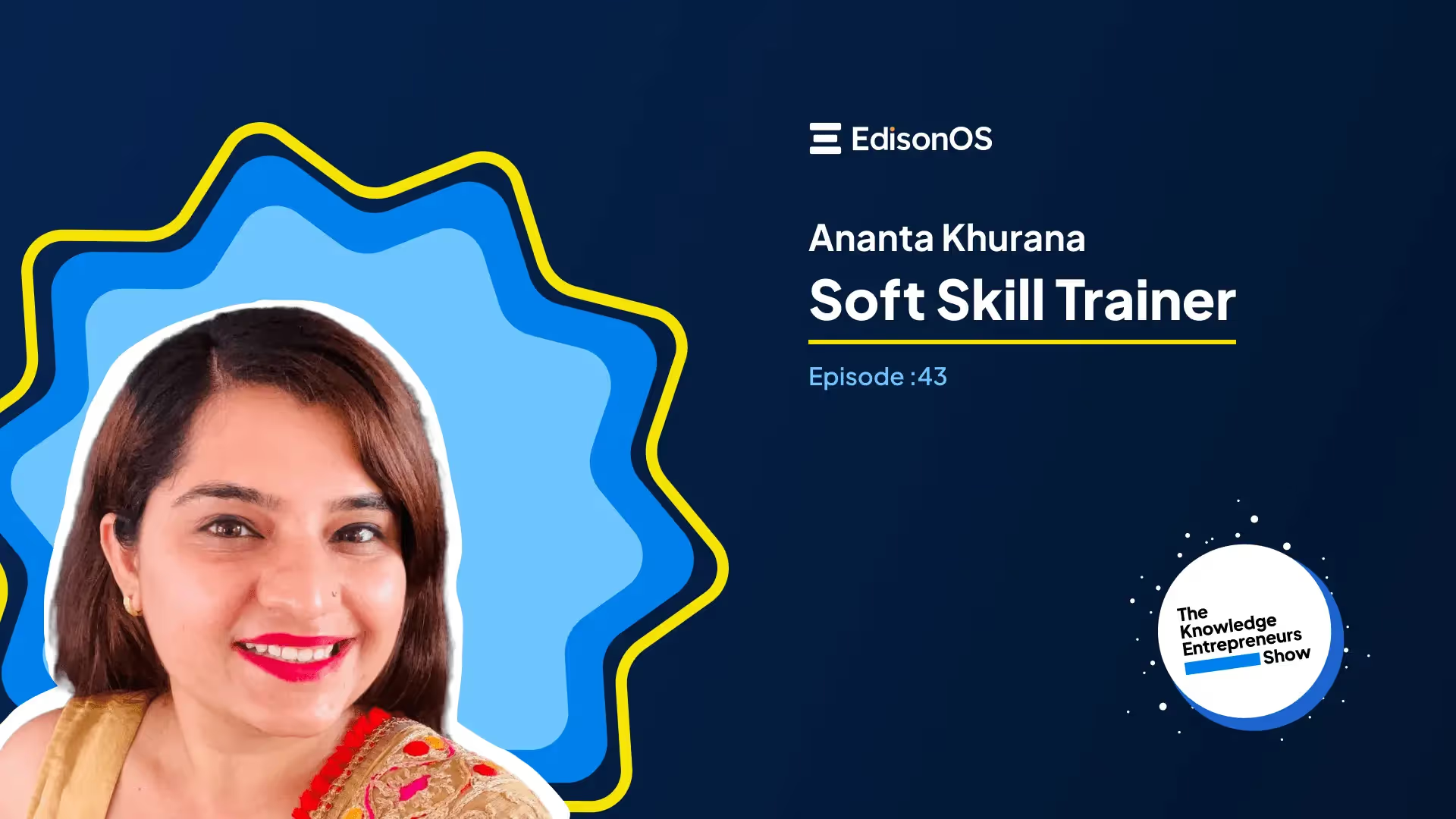




Key Takeaways
- Maximize Your SAT Score: Learn how adaptive testing adjusts difficulty based on performance, affecting your score potential.
- Master the New SAT Strategy: Understand how doing well in the first module can significantly impact your final score.
- Prepare with Realistic Practice: Use practice tests that accurately mimic the digital SAT to ensure you're fully prepared for test day.
The College Board's decision to make the digital SAT adaptive makes a significant difference to test-takers and tutors. A digital adaptive test is different from a conventional test because it adjusts itself according to the test-taker's performance.
In this post, we discuss the digital adaptive SAT and how it differs from a paper and pencil test. Importantly, we explain how it changes your testing experience and impacts your SAT strategy. Finally, we show you where to find digital SAT practice tests, answer a few questions, and dispel some myths regarding the new format of the SAT.
What is the digital adaptive SAT?
The digital adaptive SAT is the name given to the SAT that adjusts the difficulty level of the test questions based on the student’s performance. Students may take it on any permitted digital device, including a laptop.
Unlike conventional evaluations, the digital SAT adaptive testing mechanism provides a score more accurately reflects the test-taker’s abilities. That’s because the test algorithm quickly assesses the student’s abilities and subsequently serves questions that the student will most likely solve.
How does digital SAT adaptive testing work?
Here, we discuss:
- Sectional and total SAT scores
- The Base Module and the Adaptive Module
- How adaptive testing works based on student's performance
To understand how the adaptive digital SAT works, we’ll need to quickly understand the structure of the test.
The digital SAT has two sections: the Reading and Writing section and the Math section. Each section is worth 800 points, which means the maximum score is 1,600 points.
Each section is divided into two equal parts called modules. The first module is called the Base Module, while the second is called the Adaptive Module. The questions in these modules maintain a certain level of difficulty.
Most questions in the Base Module are only moderately difficult. However, the questions in the Adaptive Module will depend on how the student performs in the Base Module; you cannot predict anything about it.
If a student answers more than a certain number of questions correctly in the Base Module, the test algorithm concludes that the student is skilled enough to answer difficult questions. Hence, the Adaptive Module for that student will comprise more difficult questions (only a few are moderately difficult).
But what if the student can correctly answer only a few of the questions in the Base Module? In this case, the algorithm will deliver an Adaptive Module with questions that are mostly easier than those in the Base Module.
The test format remains the same in both cases, but the test adjusts itself per the student's performance in the Base Module. That’s why it’s called an adaptive test.

Some tests adjust the difficulty level after every question. Unlike that, the SAT adjusts the difficulty level after the entire Base Module. Technically, this makes the SAT a multi-stage adaptive test.
Whether you receive more difficult or easier questions in the Adaptive Module significantly impacts your final SAT scores. We’ll discuss it a little later in this post when we talk about your SAT-taking strategy.
Pros and cons of adaptive testing
Like any other test format, an adaptive test has its strengths and limitations. Here are the three key pros and cons of adaptive testing, specifically in contest of the SAT:
Pros of the digital adaptive SAT:
- Adaptive testing provides accurate scores of the test-taker’s abilities.
- It reduces the chances of cheating.
- Adaptive tests typically require less time.
- The adaptive, new digital SAT causes less stress because it matches the questions with the test-taker’s abilities.
Cons of the digital adaptive SAT:
- Adaptive tests are suitable only for a large group of test-takers.
- If the difficulty level isn’t set appropriately, it can defeat the purpose of adaptive testing.
- When a student receives an easier Adaptive Module, their sectional score cannot cross a certain level, no matter how well they do in the Adaptive Module.

How it impacts your scores
Here we discuss:
- Difficulty level of questions versus your scores
- Base and ceiling scores
You’ll remember that just a few paragraphs earlier, we had mentioned your SAT scores will be impacted by whether you receive the harder module or the easier module.
If you receive an easier Adaptive Module, your scores will not rise above a certain point, even if you get all the questions right in the Adaptive Module.
In contrast, if your Adaptive Module is difficult, you will be assured of a certain minimum score in that particular section, no matter how poorly you do in the Adaptive Module.
To sum it up:
- Your maximum score will be capped if you receive an easier Adaptive Module.
- If you receive a difficult Adaptive Module, your minimum score will not fall below a floor level.
So here’s the secret all high-achieving students know:
The maximum sectional score you can receive with an easy Adaptive Module will always be lower than the minimum sectional score you can receive with a difficult Adaptive Module.
Hence, among other things, the key SAT strategy to remember is to do your best in the Base Module. That way, your sectional score will not fall below a minimum value.
How the switch to adaptive SAT impacts your preparations
Here we discuss the role of the below items during your test-prep journey:
- Moving within the module
- The best-fit tests and preparatory material
- Identifying weaknesses
- Preparing for the actual SAT
First, the good news. The College Board continues to assess the same skills it did in the pencil-and-paper-based SAT. Not everything is wasted if you have started your preparations using some older resources.
However, you will need more than those older resources to score more. You’ll need the right guidance, updated study material, and a set of practice SATs that are as close to the real SAT as can be.
Here are the four ways the digital SAT adaptive testing impacts test-takers:
1. Restrictions on how far back you may go
You may go back and forth to any question within the same module, but you cannot jump to any other module. That's because once you submit the Base Module, the test algorithm will freeze your performance for that module. Then, you will receive the Adaptive Module accordingly.
2. Choosing the right-fit test-prep material
It’s not about the types of questions; it’s about remaining faithful to the difficulty level of the actual SAT. Your practice tests won’t reflect your performance accurately without the right match of difficulty level.
Not surprisingly, few test-prep companies can do that. At Edison, we decided to overcome this challenge most uniquely. We prepared our practice tests by accurately mimicking the Bluebook app to create the most accurate adaptive SAT practice tests.
You can take the free digital SAT here.
3. Unveiling out your fundamental weaknesses
Though the College Board continues to evaluate the same skills as before, they have made small but important changes in both sections. So, it’s more important to uncover and address your weaknesses.
For instance, one reason you don’t score well in the Math section could be because you fail to understand the fine print of language (“The population of a town has grown by three times in the past decade.” Does it mean the population has become 3X the original or 4X?).
4. Preparing for the test day
This one may sound cliched, but the SAT is more than just a few math topics or writing questions. The more you work with practice tests that closely mimic the real SAT, the better equipped you get. So after every practice test, review the answer explanations of every question and not just the hard module.
The adaptive nature of the test splits each section into two modules of equal length but weighted differently. So, you’ll need a different strategy for each module. Build a strategy as you advance in your test prep and stick to it on the test day. Remember, the new digital adaptive SAT isn't the old paper test conducted on a digital device; it's different and deserves different preparation.
How Can EdisonOS Help Tutors Offer DSAT mock tests?
EdisonOS, as a digital test prep platform for the DSAT, offers robust features specifically for tutors to help students prepare effectively for the adaptive nature of the Digital SAT.
- Real test simulation: The lack of familiarity with what the real test environment looks like creates anxiety in students on how to approach it. So, EdisonOS has meticulously created a real test simulation environment that mirrors the official Bluebook interface down to the last detail. You can find the layout, navigation tools, timer, built-in calculator, and every such element carefully replicated to provide students with an authentic DSAT exam-day experience. By attempting mock tests on our platform, students can approach the actual one more confidently and clearly.
- Expert curation question bank: At EdisonOS, we are equipped with a question bank with 5000+ questions prepared by top industry experts with 2 decades of experience. Unlike platforms that rely on AI-generated content, we have a human-led approach that guarantees that students are exposed to questions that meet the content standards of the adaptive Digital SAT. Plus, EdisonOS also lets tutors create their own mock tests or practice tests with their questions in less than an hour.
- Molecular-level performance analytics and reporting: This platform offers molecular-level reporting that breaks down student performance by section, skill area, question type and time spent per question. This report gives detailed insights for tutors on how their students are performing. They can identify patterns and spot the learning gaps in a particular section, and based on this, they can provide targeted tests for the skills that need improvement.
- Customizable scale score system: We have designed a scaled score that mimics how the real test results are calculated. This helps students get familiar with the DSAT scoring system they will face. Plus, tutors can add their own scores on the customizable dashboard.
How EdisonOS Empowers Tutors for Digital SAT Success
EdisonOS is a purpose-built Digital SAT platform designed for tutors to craft high-quality practice tests, simulate the official exam environment, and access powerful student performance analytics. Since the Digital SAT's complex scoring system considers both question difficulty and correctness, tutors need sophisticated tools to prepare students effectively and demonstrate measurable results.
Why Tutors Choose EdisonOS:
- Expert-Vetted Content at Scale: Access 5000+ SAT experts-vetted questions and 22 expert-designed adaptive tests, helping tutors boost student scores by 200+ points
- Rapid Test Customization: Build your own practice tests that mimic the real test-taking experience in under 60 minutes, allowing you to target each student's specific weak areas
- Authentic Test Environment: Mimics the Bluebook interface to reduce test anxiety and familiarize students with the real test format, ensuring students are comfortable before test day
- Data-Driven Insights: Detailed breakdown of student performance where every second spent is analyzed, with tutor-centric tools to manage multiple students, track progress, and create personalized study plans with ease
Ready to transform your Digital SAT tutoring? Join thousands of tutors using EdisonOS to deliver measurable results and help students achieve their target scores.
Frequently asked questions
Yes, the new digital SAT is multi-stage adaptive. The difficulty level of questions you’ll get in the second module in both sections will depend on how well you did in the first module. If you do well in the first module, most questions in the second module will be of a higher difficulty level. Otherwise, most questions in the second module will be more straightforward. This way, the test adapts to your performance
The digital SAT scores are a simple total of the Reading and Writing section scores and the Math section scores. Each of the two sections is graded between 200 and 800 points. Hence, the total SAT score will be between 400 and 1,600. There is no penalty for incorrect answers.
You have 2 hours and 14 minutes for the digital SAT, excluding the 10-minute break between the two sections. The Reading and Writing section is allowed 64 minutes, while the Math section is allowed 70 minutes.
The College Board discontinued the paper-and-pencil test in March 2024, so the SAT is fully digital now. With the sunsetting of the paper test, students may now take only the digital adaptive test.

Tutors Edge by EdisonOS
in our newsletter, curated to help tutors stay ahead!
Tutors Edge by EdisonOS
Get Exclusive test insights and updates in our newsletter, curated to help tutors stay ahead!
Recommended Reads
Recommended Podcasts












.png)
.webp)
